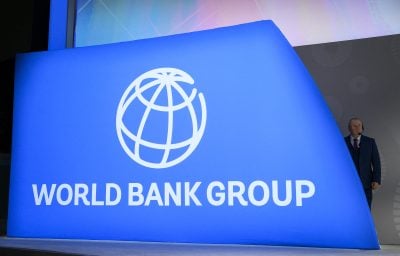Four years ago, Fidelity Bank aimed to be Nigeria’s top tier 2 bank. It succeeded.
Fidelity now aims to be a tier 1 bank by 2022. Rated B- by Fitch and S&P Global Ratings, Fidelity has a total asset base of $4.4bn, 4.1m bank accounts, 1.5m mobile customers, and more than 3,000 professional staff. It is ranked amongst the top 10 banks in Nigeria, albeit with a market share of about 5%.
It is also reputed to be one of six Nigerian banks that conducts an interim audit of its financials and was the first to adopt a market-reflective exchange rate for preparing them. Fidelity was also recently rated the fourth best bank in the retail segment by KPMG, a consultancy, in its 2017 Banking Industry Satisfaction Survey (BISS).
The bank already maintains high standards for some regulatory metrics: its capital adequacy ratio was unchanged at 16% in its most recent reporting, above the regulatory minimum requirement of 15%.
Chief executive Nnamdi Okonkwo attributes the successes under his four-year stewardship thus far to a strong management team and well-motivated employees. In fact, Fidelity staff are believed to be the one of the best remunerated in the industry. It also has perhaps the most gender-friendly top management team of any Nigerian bank, with three female executive directors
Organic growth strategy
How does Fidelity plan to operationalise its tier 1 ambitions? Okonkwo prefers an organic strategy, but would also consider acquisition opportunities if they align with the bank’s strategy. Does Fidelity plan to raise new capital?
There are no immediate plans to do so, the chief executive says in response. But it could seek funding in the local debt market during the course of the year. In any case, it sold a $400m eurobond in the 2017 financial year.
Asked what his strategies for growth are, Okonkwo highlights three things: digitisation, a focus on core customers and small and medium-sized enterprises (SMEs). Digitisation, especially via its “Fidelity Mobile” platform, has attracted more than 1m new customers in the past three years.
In fact, digital banking now accounts for over 25% of the bank’s fee income. The bank is also counting on its digital banking platform to drive down the cost-to-income ratio to 50% (72.7% in Q1 2018) by ensuring at least 90% of total transaction volumes are via digital channels.
“We will enhance our robust electronic banking processes and products thereby deepening our hold on the retail and commercial markets, small and medium scale enterprises and niche corporate clientele,” Okonkwo told shareholders in May at the bank’s 30th annual general meeting in Lagos. For its SME clients, the bank plans an “SME Funding Fair” where it aims to fund as many SMEs as possible to the tune of N500 million.
If successful, it would become an annual event, Okonkwo says. Bottomline, Fidelity aims to be the “go-to bank for SMEs”. Fidelity also sees growth potential in the fast moving consumer goods, manufacturing, retail and agriculture sectors and has set a 2018 loan growth target for these sectors of 10%.
Rafiq Raji
Want to continue reading? Subscribe today.
You've read all your free articles for this month! Subscribe now to enjoy full access to our content.
Digital Monthly
£8.00 / month
Receive full unlimited access to our articles, opinions, podcasts and more.
Digital Yearly
£70.00 / year
Our best value offer - save £26 and gain access to all of our digital content for an entire year!
 Sign in with Google
Sign in with Google 


